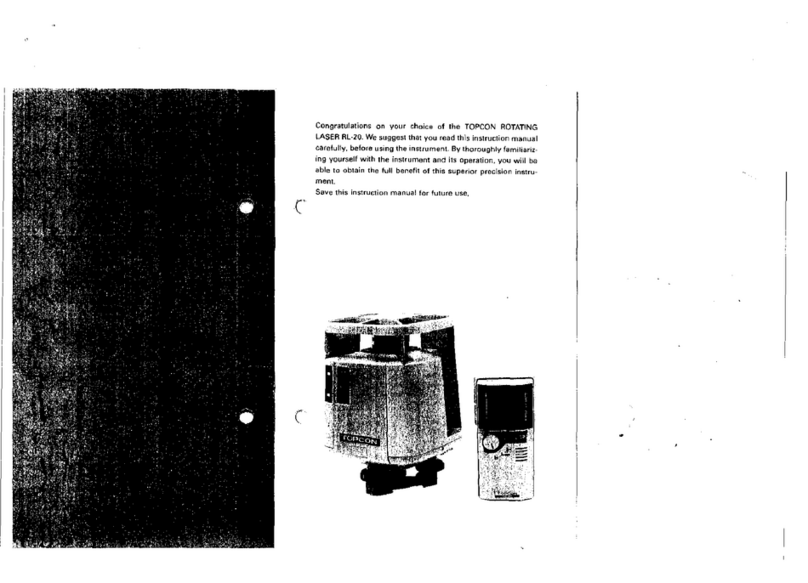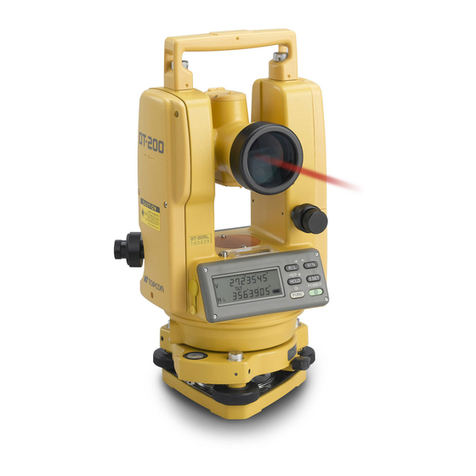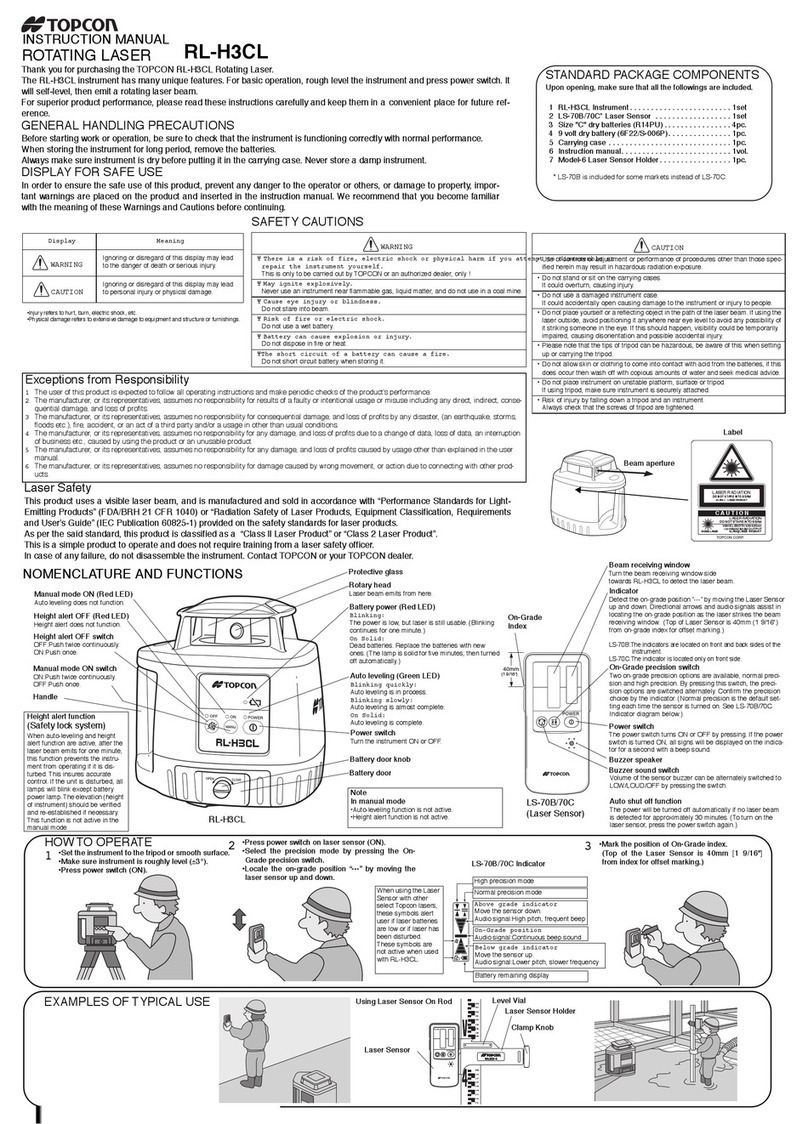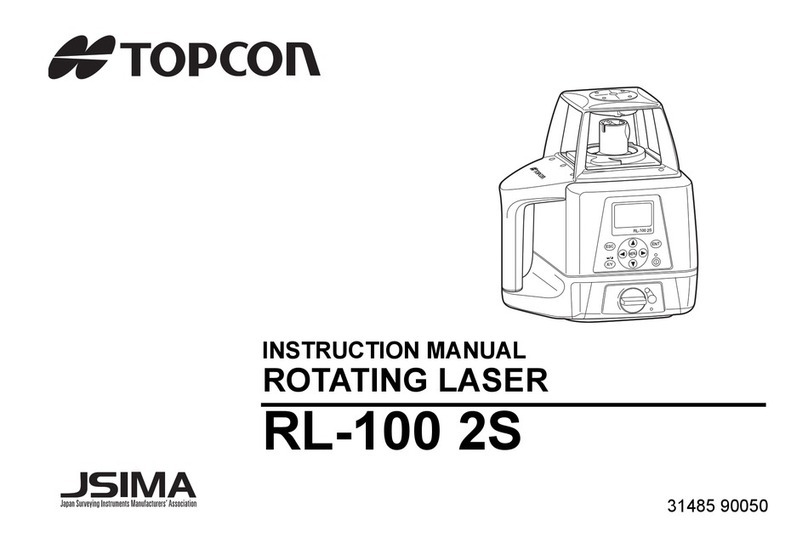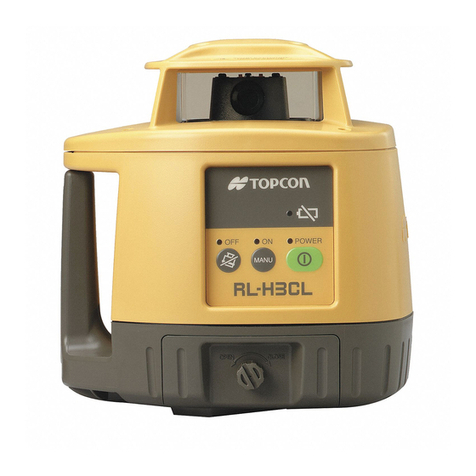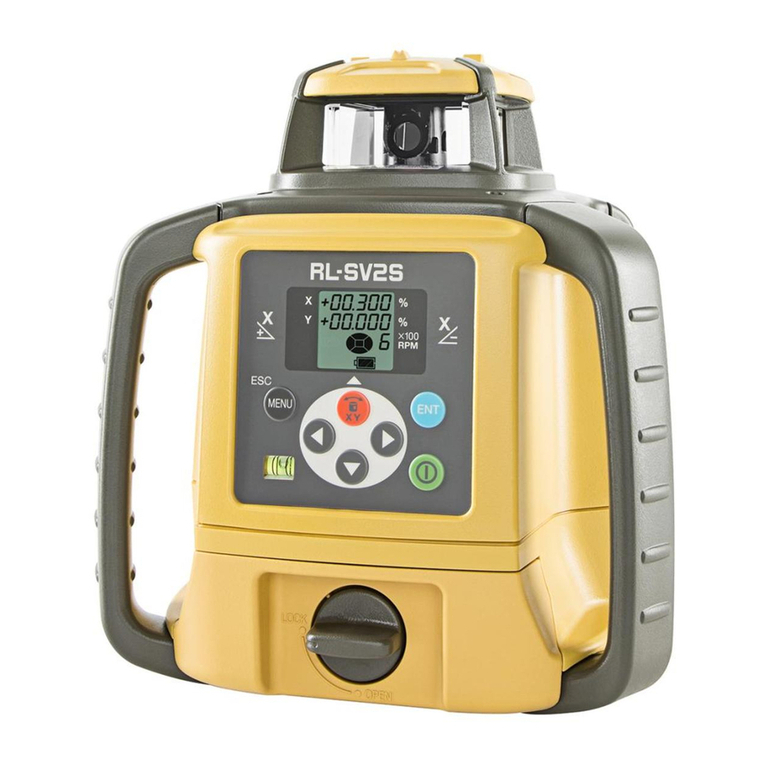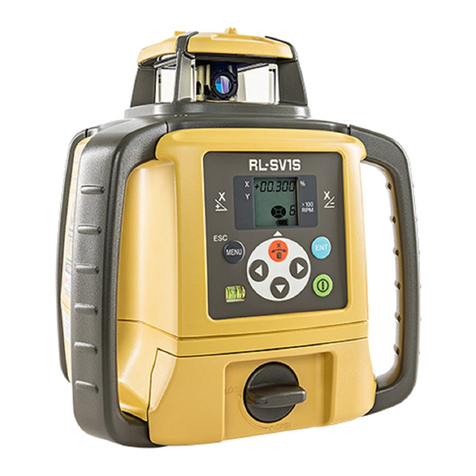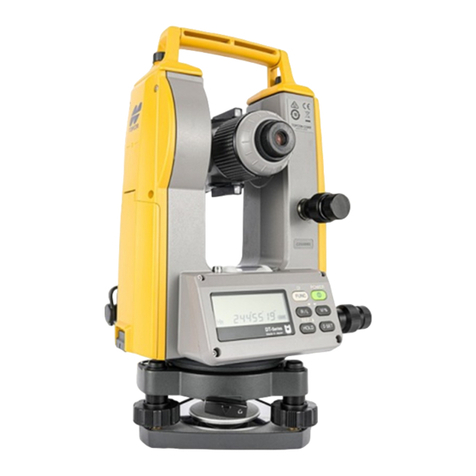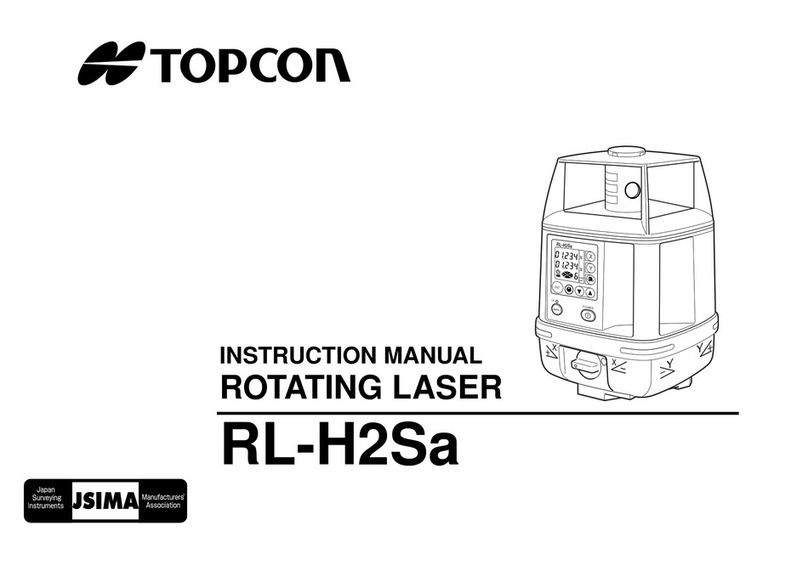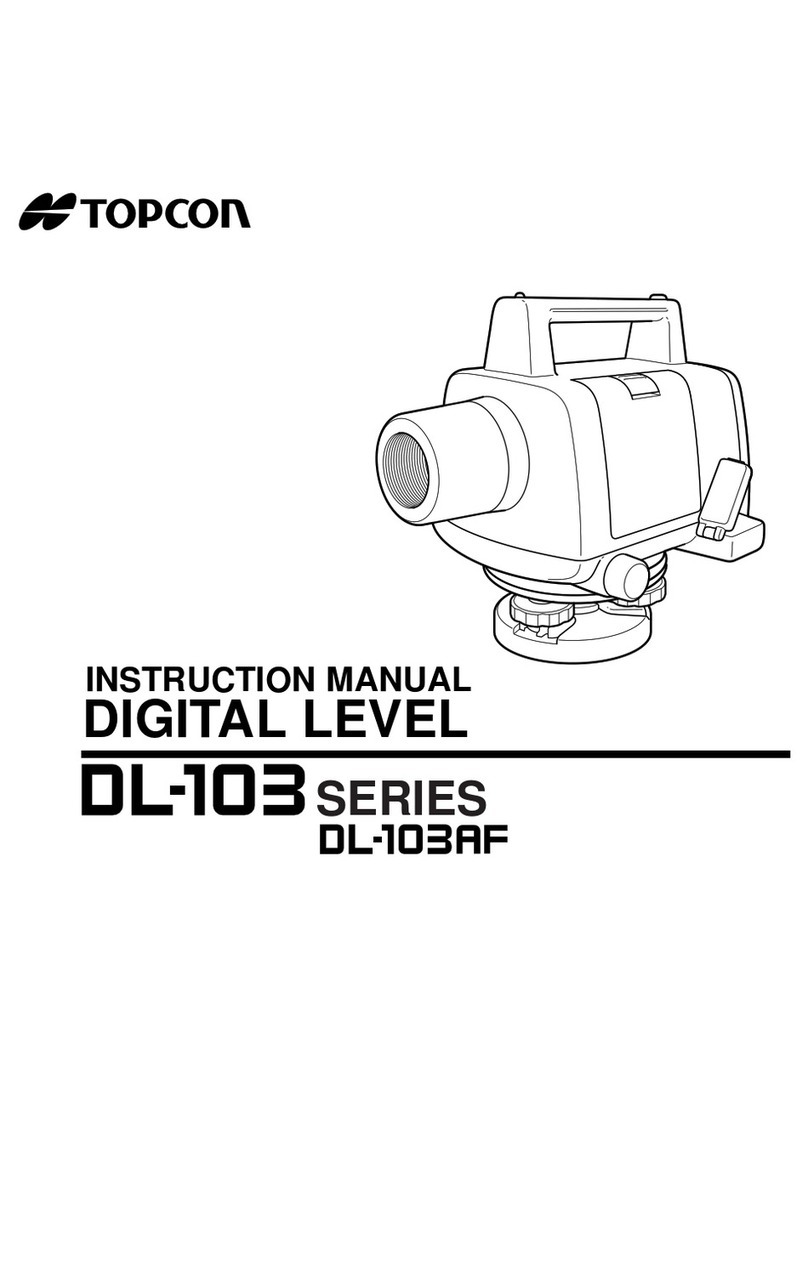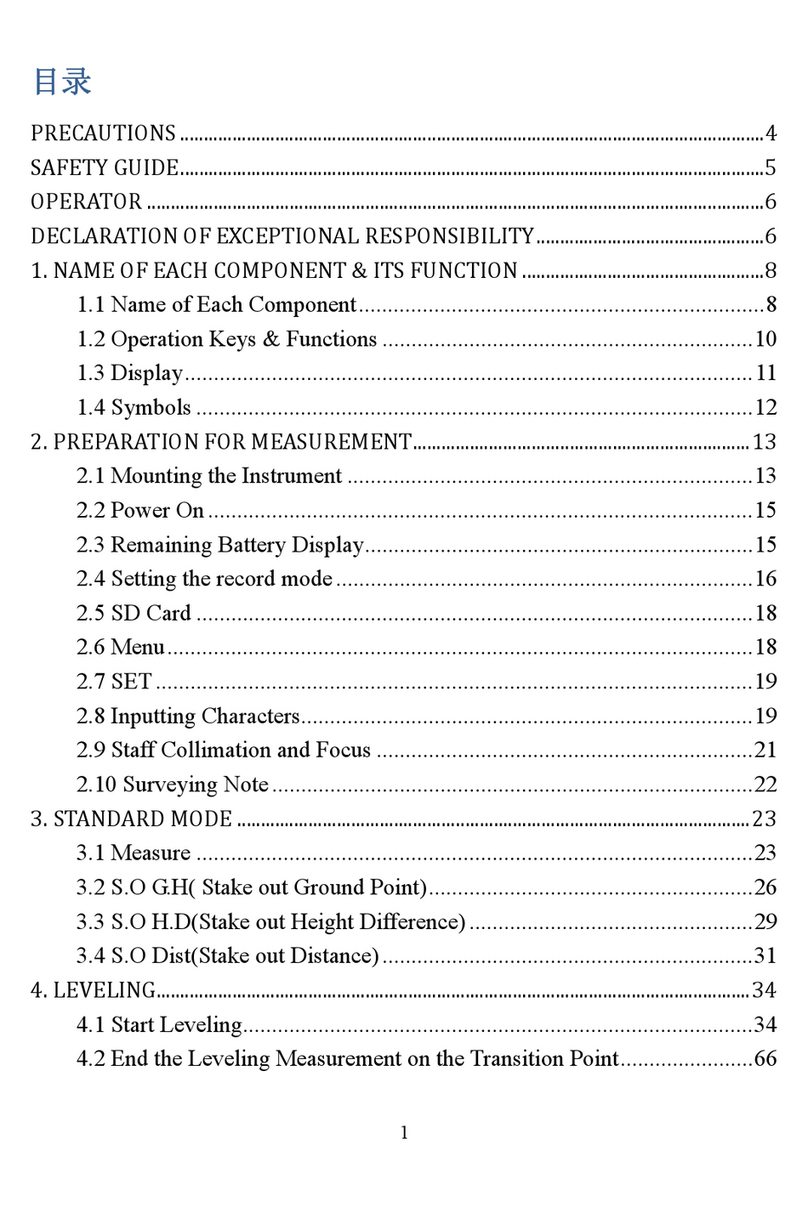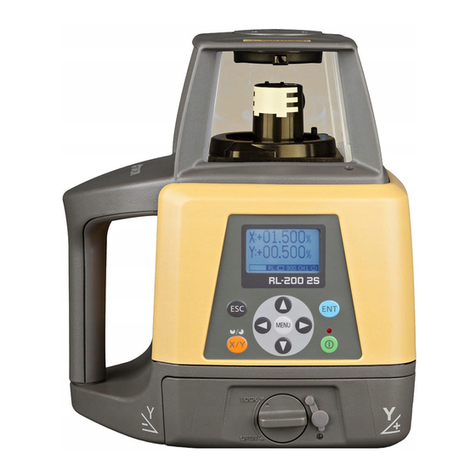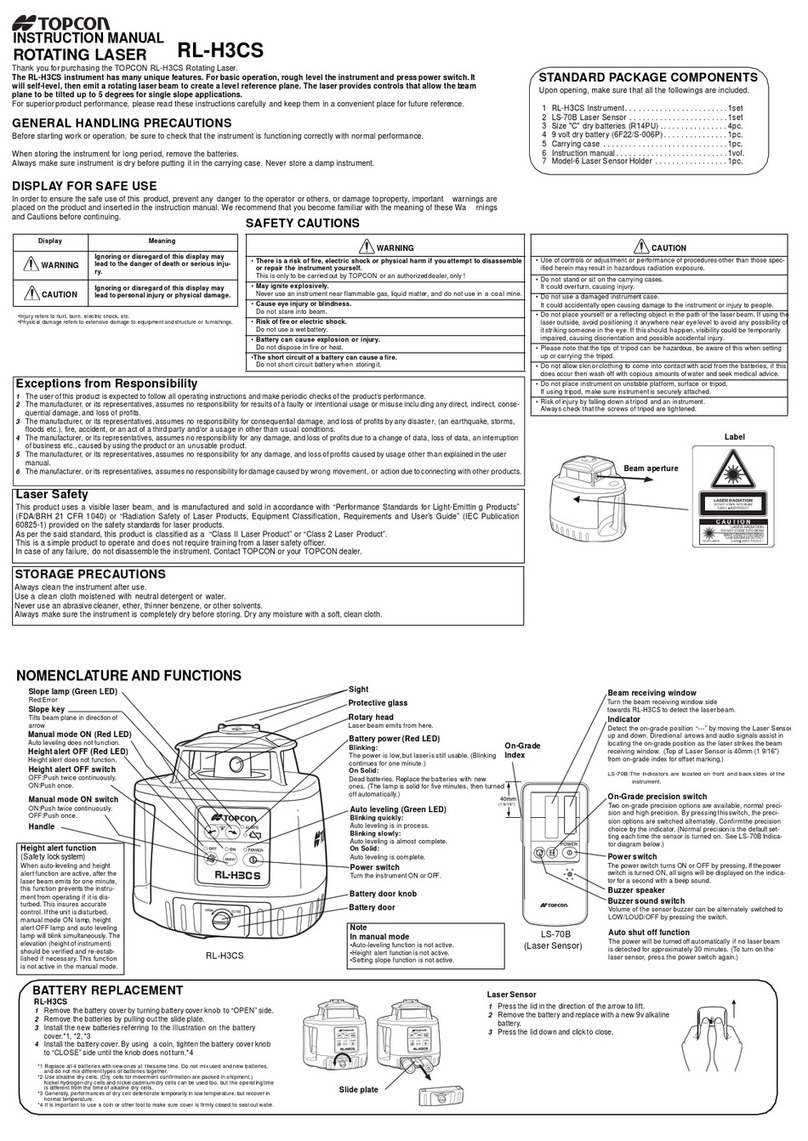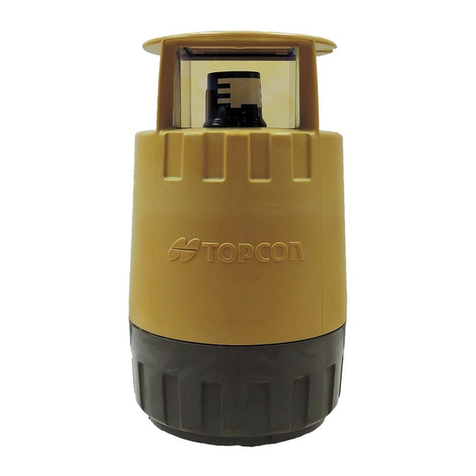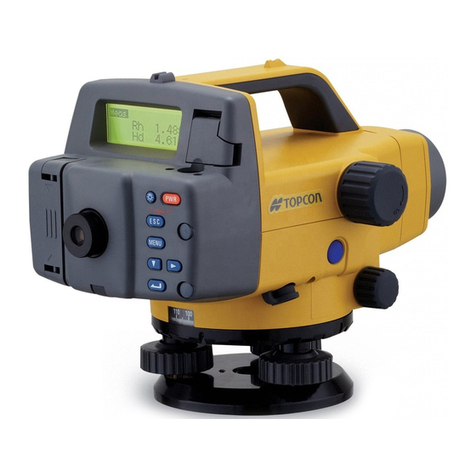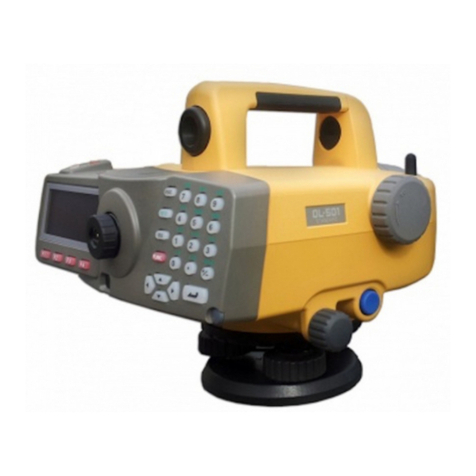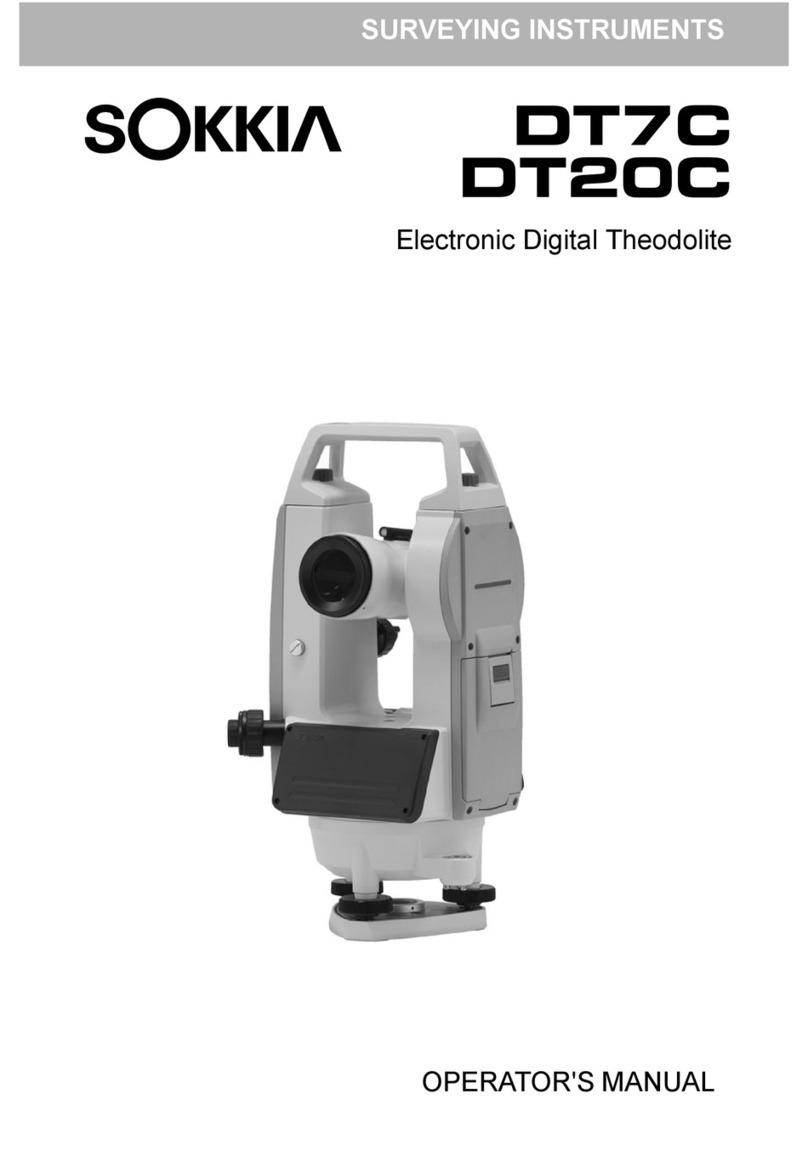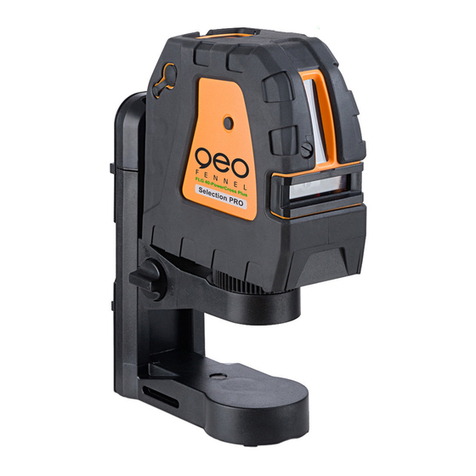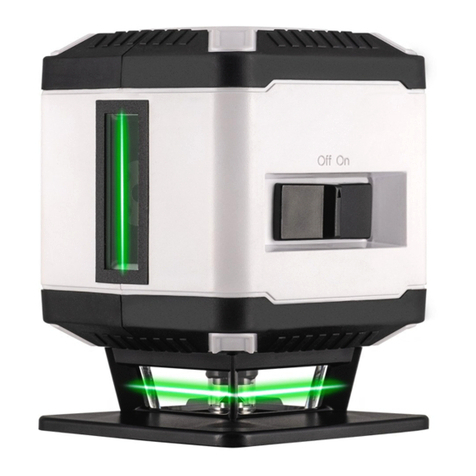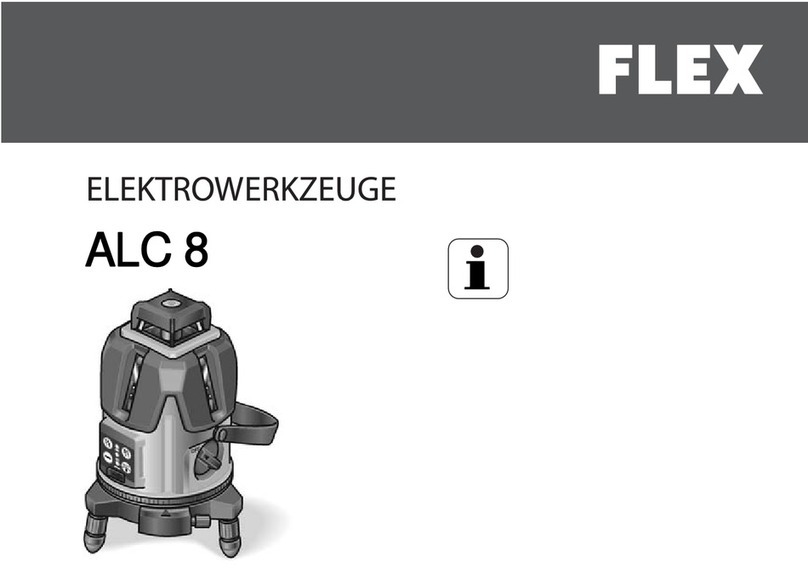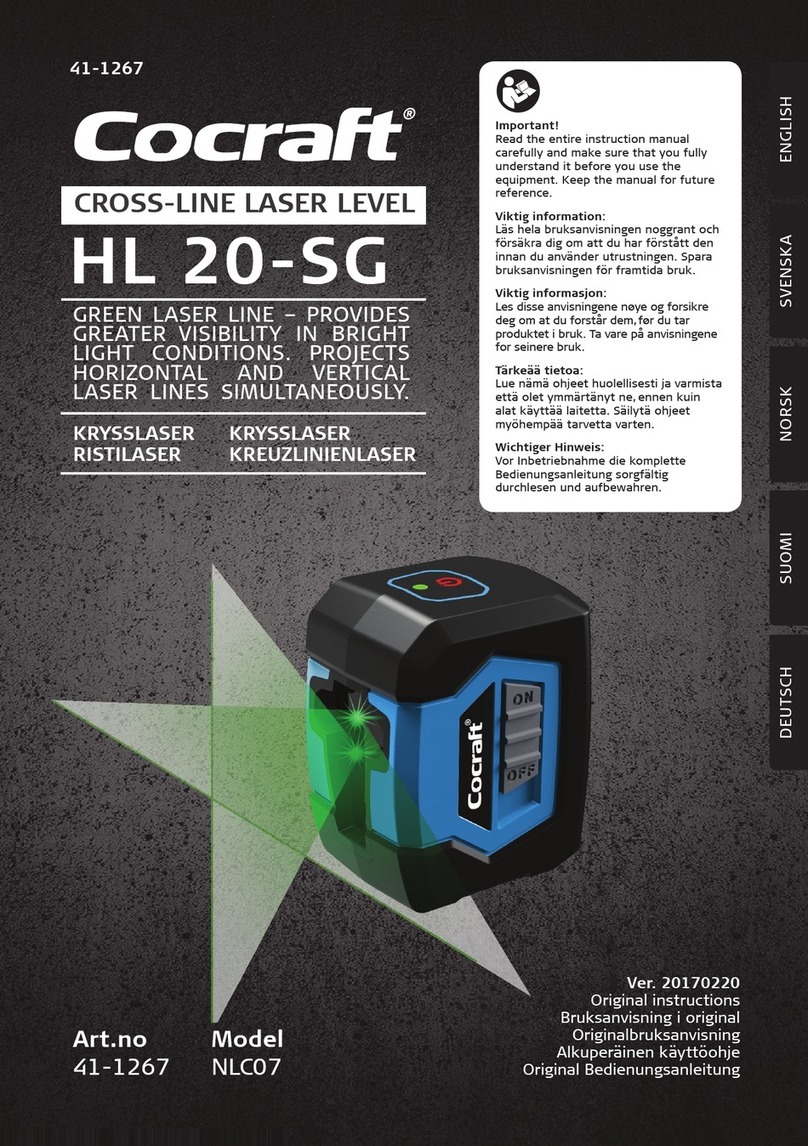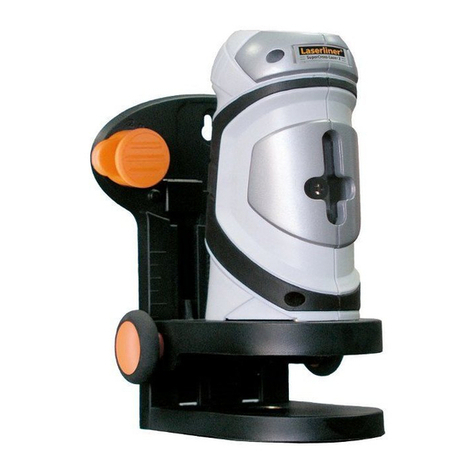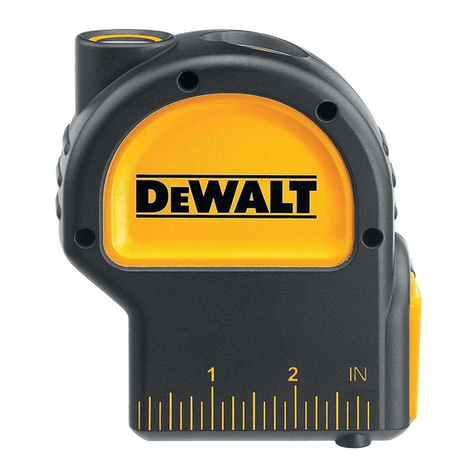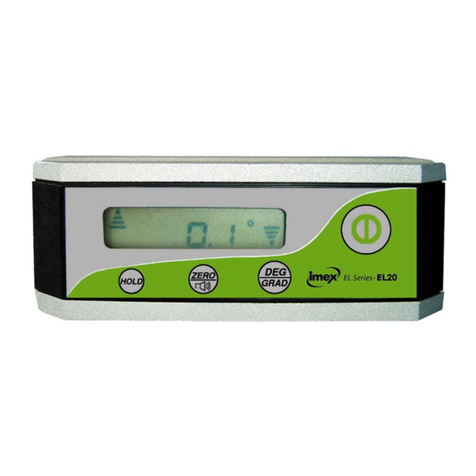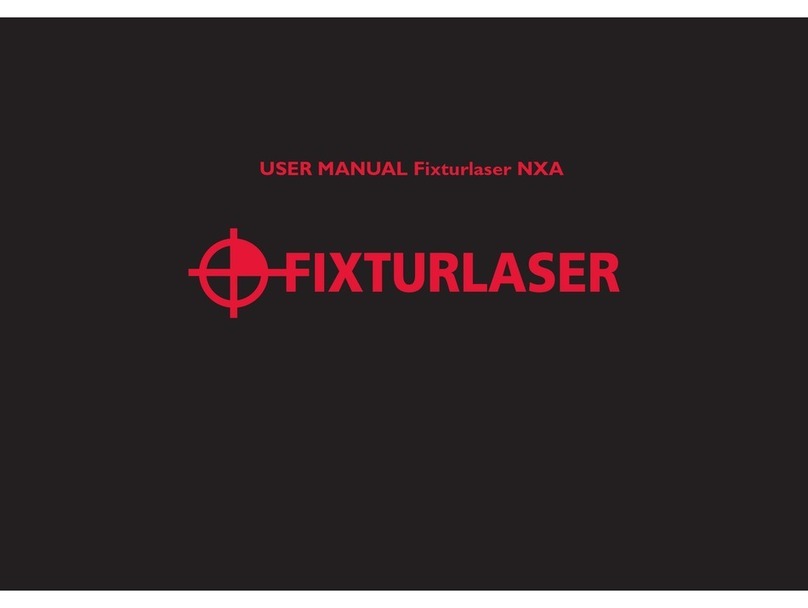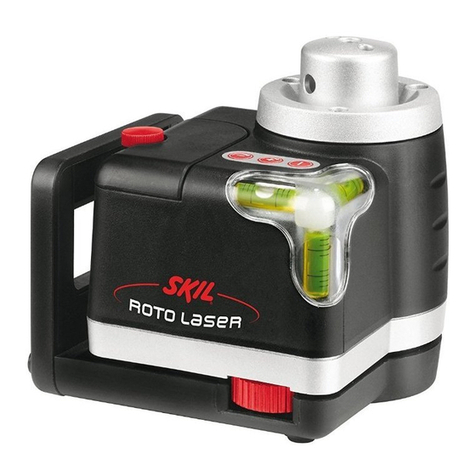
IMPORT
AN
T
(
1)
Readings
will
be
incorrect,
if
the
eyep1ece
has
not
been
properly
adjusted
for
the
use
r's eyesight and/
or
if focus-
ing
is
improper, since this
will
mtroduce parallax and,
therefore, give wrong results.
(2) Always rotate the fine
horizontal
knob
in
the tightening
direction,
or
in the clockwise
direciton,
and stop, when
fixing
a sight.
(3) For high precision surveying operations, always cover
the instrument and
tripod
with
some
type
of
awning or
umbrella
to
shield them
from
strong sunlight_
(4) Protect the instrument
from
shock and vibrations, when
carrying
or
transporting the instrument.
(5)
After
using the instrument, brush away dust
on
all
exposed surfaces, then wipe clean and
dry
and,
finally,
store (in the carrying
case)
in
a well-ventilated location.
(6) When the lens surface must
be
cleaned, always brush or
blow
dust
or
dirt
away first,
with
the cleaning brush
or
a
rubber-ball air blower. Then, wipe the surface gently
with
a
soft
well-washed
cotton
cloth
or
lens cleaning
tissue.
If
necessary,
dip
lightly
in
alcohol
or
a
mixture
of
alcohol and
other
and then wipe the lens surface gently
with
ever-widening circular
mot
ions,
from
the center
out.
Do
not
rub
the lens surface
on
any
cond
i
tion
but
repeat,
if
found
necessary.
(7} Clean the plastic carrying
case
with
neutral detergent
or
water.
Do
not
use
benzine, th1nner
or
any
other
chemi-
cal
solutions.
(8)
Use
tripods
with
a
tripod
screw
of
5/8
in. diameter and
11
threads per inch,
as
per J I S B standards.
(9) Do
not
dismantle the telescope
or
revolving parts
of
the
instrument. Contact the nearest experienced and well-
equipped factory,
if
you
think
that
the instrument must
be overhauled
or
repaired.
C
ONTENTS
FEATURES
STANDARD SET COMPOSITION
..
....
-
....
-
..
--
..
-- 2
OPTIONAL ACCESSORIES
....
..
·
......
..
-
......
-
..
· 2
NOMENCLATURE
..
·--
..
-- --
....
--
..
--- ---
....
· ·
....
· 3
BASIC OPERATING PROCEDURES --
......
·
....
-
......
5
1.
Setting
Up
the Tnpod · · ·· ·
·-
· · ·
·-
· · · · ·· · ·
·-
·· · · · · 5
2.
Attaching
the Instrument
to
the Tripod Head
·-
· · · ·· · 6
3.
Setting
the Instrument
Up
Over
the Pomt · · ·· · · · ·· · 6
4. Leveling the
Instrument
· · · · ·· · · ·· ·· · · · · · ·· · ·· · · · ·· · 7
5. Adjusting the Eyepiece ·· · · · ·· · · ·· · · ·· · · •·· · · ·· · · ·· · · 8
6. Sighting and
FOCUSing
..
--
......
•
....
·
....
·--
..
..
··
..
8
OPERATI
ONS
--
..
--
..
·
..
--·
--
..
--
..
···
..
..
........
....
·
10
1. Leveling
or
Determing
the
Differeces
in Elevation · ·
10
2. Measuring a Honzontal Angle · · · · ·· ·
·-
·· · · · ·· · · · ·· ·
11
3. Stadia
Survey
1ng · · · · · ·· · ·· ·· · · ·· · · · · ··· · · ·· · · · ·· ·
12
ADJUSTMENT
--
--
..
--
---
..
·
..
·· --
....
-- ·14
Adjustment
of
th
e
C1
rcu
lar
Level
...
....
.............
--
14
Co
lh
mat
1on
of
the
In
s
tru
me
nt
-- · -- ·
..
·--
..
--
----
·
..
·--
16
OPTIONAL
ACCESSORIES · · ·· · · · · · ·· · · · ·· · · ·· · · · · ·· --
19
1. Alminum Tripod, Type E · · ·· · · · ·· ·· · · · ·· · · ·· · · · · · · · ·19
2. Alminum Tripod, Dome Head ·
·-
·· · · · · ·· · · · · ·· · · ·· · ·· 19
3. Plumbing Bob · ·· · · · ·· · · ·· · · ·· · · · · ·· · · ·· · · · ·· · · · ·· · · · 19
SPECIFICATIONS ·· · · · · ·· · ·
..
·
..
· · ·
..
· · ·
..
·· ·
..
·· ·
..
·
..
20
